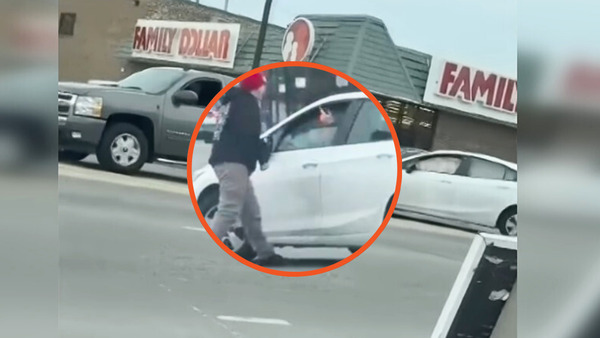
Frigid weather and electric cars: it’s known for quite some time now that they’re not the best of friends. Even though this frosty relationship isn’t breaking news, a new furor sparked this week following a FOX 32 Chicago report that showcased several Tesla drivers struggling to charge their EVs at a Tesla Supercharger in Oak Brook, Illinois.
As temperatures in this Chicago suburb plummeted to under zero this week for the first time in ages, the situation seemed to have become dire, with owners having to tow their Teslas out on flatbeds because chargers weren’t working, and their EVs had run out of juice. The TV station didn't mince words: “Public charging stations have turned into car graveyards,” reporters said, while calling depleted EVs “dead robots.” A barrage of similar stories emerged out of this report, with several major publications echoing this voice.
Get Fully Charged
EVs and cold weather
Much like gas cars, EVs are less efficient in cold weather. Efficiency also changes depending on the car’s battery chemistry and how warm the battery is—that can spell out bad news for cars making long trips in the cold, or unable to charge at home.
But did the situation truly warrant such language, or was it sensationalized? And is Tesla entirely to blame, or is there any user error involved?
InsideEVs did some investigating of its own, and here’s what we found: For starters, several Tesla owners in the Chicago metropolitan area reported via the Tesla Owners Club forum on Monday that three out of 13 Superchargers were closed, possibly due to the frigid weather, mainly in Oak Brook, Rosemont, and Country Club Hills.
First, this is unfortunately not a novel problem. We’ve known for quite some time now that extreme cold can freeze charging cables, connectors, and other critical components of a Tesla Supercharger (or any EV fast charger, really.) Ice accumulation, stiffening of materials, and increased resistance in electrical pathways may contribute to these woes. This, in turn, affects the efficiency and performance of electronic components, potentially leading to malfunctions or shutdowns, like the ones seen in Oak Brook.
The FOX station mentions that some of the stranded owners were those who had just landed at Chicago O’Hare International Airport, which is just 14 miles north of the Oak Brook Supercharger. Tesla’s official documentation says that its cars use around 1% of its battery per day at idle. But if Sentry Mode—which remotely monitors outside conditions via the car's cameras—is enabled, the car can sap as much as 15% of pack capacity in 24 hours. That means someone who leaves Sentry Mode enabled while parked at the airport may return with a significantly reduced battery capacity.
Fortunately, there are several Supercharging stations close to O’Hare. There’s just one problem: at least three of these stations, including the two closest stations (Rosemont and Oak Brook) were reportedly non-functional. In fact, across 13 stations in the region (which, to be clear, is just a handful of the total number of charging locations near Chicago), nearly 50 stalls were said to be out of order.
Our friends over at The Autopian also found reviews on plugshare about Supercharging problems at many of these locations, some of which outlined fights breaking out between owners looking to charge.
Chemistry And User Error Challenges
Battery chemistry is an issue here too. Tesla most commonly uses two different battery chemistries in its cars: Lithium-Iron-Phosphate (LFP) and Nickel-Cobalt-Aluminum (NCA). LFP batteries are found in the standard range-trimmed Model 3, for example. The prismatic cells are cheaper to produce and not as energy-dense as cylindrical NCA cells found in the Long Range and Performance variants of the Model 3 and Y.
While both NCA and LFP batteries are affected adversely by cold weather, LFP batteries perform slightly worse. For starters, the overall range is reduced more so than NCA cells. LFP packs also have a harder time charging in colder weather. This means that if the battery pack is unable to precondition—a process that warms the battery up to an optimal temperature making charging more effective—before arriving at a DC fast charger, the overall charging speed will be significantly slower. Couple that with the reduced range in extreme cold, and you’ve got a recipe for arriving at a Supercharger with a state of charge (SoC) in the single digits.

One major thorn in the process was probably the lack of knowledge about battery preconditioning. Preconditioning itself requires energy, so leaving your EV at a low SoC can hamper that process. Owners have pointed out that preconditioning can consume between 7.5 to 12 kilowatt-hours, and those figures can vary depending on the set defrost level and set cabin temperature.
And since Teslas typically stop preconditioning at a lower SoC to avoid running out of charge ahead of reaching a fast charger, that battery conditioning isn’t started until the car is plugged in, which means a slower fast charging session, assuming the charger is functional. If it’s not, it could mean a SoC too low to reach another Supercharging station, thus leaving the car stranded.

It’s also possible that those who were routing to the out-of-service Superchargers were doing so out of memory. Perhaps those individuals rely primarily on Supercharging due to not having a charger of their own at home. The cold weather sapping the range and efficiency coupled with the lack of preconditioning may have caused these owners to become stranded at the Oak Brook Supercharger.
Moreover, owners have highlighted how charging performance declines in bone-chilling weather. One owner said on Reddit that even after preconditioning the battery for 20 minutes, with an additional 10-minute “preconditioning for fast charging,” the Supercharger didn’t immediately add real driving miles.
It’s something Kyle Conner of Out Of Spec Reviews also highlighted in a video that showcases how batteries behave during “deep freeze” conditions. Superchargers often don’t add range until batteries are first heated to optimal temperatures, and even then, stalls engineered to deliver 150-250 kilowatts only deliver 20-50 kW.
Also, it’s high time we accept the reality of EV range in winter, and instead focus on solutions to optimize it.
During the 2022-2023 winter, battery health and data startup Recurrent collected data from 10,000 EVs to analyze the impact of cold weather on the range. After analyzing over two dozen models in the U.S., Recurrent found that the average observed range in winter—range after factoring in real-world variables like climate, terrain, and driving patterns—was 70.3% of their normal range.

Chicago is a busy hub, and this would be similar to many gas stations running out of fuel with a bunch of cars running on fumes pulling up to the pump. Of course, such failures can attract a lot of media coverage. But our readers told us that the cold weather in nearby Michigan has been just as harsh to chargers in that area—five Supercharging locations with 56 stalls outside of Detroit, 12 were recently reported as unavailable.
So what can be done to prevent it from happening to you?
How To Avoid This Problem
Electric vehicle supply equipment providers like Tesla need to be on top of maintenance. This could be repairing broken or vandalized chargers, or weather-proofing them for occasions like we are seeing today.
(It should be noted that even gas cars have trouble starting when temperatures get this cold, and a weather-driven power outage can take out a gas station too. But this incident proves that education, infrastructure and maintenance could be better so this doesn't happen to fufutre EV drivers.)
Drivers also need to care for the equipment. One Redditor mentioned that the problem could be owners who fail to properly care for the Superchargers when they’re done using them. It’s not uncommon for owners to just drop the plugs into the snow, which leads to ice buildup inside of the NACS connector.
Sure enough, I forgot to plug my own Tesla Model 3 in last night, and when I went to plug it in (while writing this!) I noticed that my L1 and L2 pins were caked with ice despite being secured in my Tesla wall charger. So I could see how this could potentially be a problem while on the road, and a piece of advice from another Reddit user could help come in handy for frozen chargers, door handles, and charge doors: carry a portable battery-powered heat gun in the trunk when traveling. A bit on the extreme side, but hey, it might just work.
Additional reporting by Suvrat Kothari







